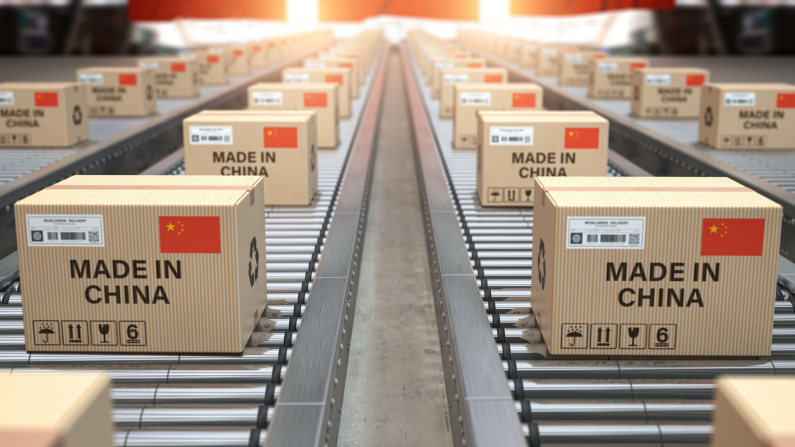The Chinese IT market is a vast and dynamically developing digital landscape that has attracted global attention for several years.
According to data for 2025, the volume of China’s digital economy exceeded $7 trillion, and the number of internet users reached 1.1 billion. It is not surprising that the Chinese IT sector is becoming increasingly attractive to foreign investors and international companies seeking to establish their niche in this promising market. According to the Ministry of Commerce of the PRC, in the first half of 2025, the volume of foreign investment in high-tech industries increased by 23.8% compared to the same period last year. Impressive? It is impressive!
Not only is Chinese IT demonstrating such phenomenal growth rates, outpacing many developed countries, but it is also famous for its unprecedented approaches to work and unusual niches that are incomprehensible to other countries. For example, have you heard of otome games? What about the 9/9/6 schedule? It is necessary to know about all this if you want to scale your own business in China, are considering working there, or, well, are simply interested in how the Middle Kingdom works and lives from the inside. The Chinese IT industry is not just a copy of Western models, but a unique phenomenon with its own rules of the game and unique characteristics that will surely amaze you.
The 9/9/6 Schedule: Overtime as a Lifestyle
One of the most well-known and controversial aspects of Chinese IT culture is the so-called “996” schedule. This formula means working from 9 am to 9 pm, 6 days a week. And although Chinese labor law formally prohibits such overtime, in practice the “996” schedule has become an unspoken standard in many technology companies, especially in startups and fast-growing corporations such as Alibaba, Huawei, and Tencent.
This work regime is explained by the desire for rapid growth and the achievement of a competitive advantage in a highly competitive market. Company executives believe that only through overtime work can they keep up with innovations and meet customer needs. For example, Alibaba founder Jack Ma publicly supported the “996” schedule, calling it a “huge blessing” for young employees. However, the “996” schedule puts enormous pressure on employees, leading to burnout, health problems, and a deterioration in the quality of life.
In recent years, voices of protest against this practice have been heard more and more often in Chinese society. In 2019, the “996.ICU” project was created on the GitHub platform, where programmers shared their stories about overtime work and its consequences. In recent years, the government has been making attempts to regulate labor relations. The Supreme People’s Court of China has declared the “996” schedule illegal, but this practice remains an important part of China’s IT culture.
Government Support and Digital Authoritarianism

Unlike Western countries, where the IT industry develops mainly on private investment, in China the state plays a key role in supporting and developing technology companies. The government allocates huge funds for research and development, provides tax incentives, and creates favorable conditions for innovation. For example, the “Made in China 2025” program is aimed at supporting the development of key industries, including IT, and provides for the allocation of trillions of yuan to finance projects.
However, such support has a downside. The Chinese state exercises strict control over the internet and content, introducing censorship and restricting access to certain resources (you’ve heard of the Golden Shield or the Great Firewall of China, right?). Undoubtedly, this “digital authoritarianism” has a significant impact on the activities of IT companies and even imposes its own restrictions on the possibilities of applying and developing technologies. For example, Google, Facebook, and Twitter are blocked in China, and local social networks and messengers are subject to strict censorship.
Companies must comply with strict rules and censorship requirements, as well as cooperate with the government in matters of ensuring security and control over information. For example, Chinese messengers are required to provide the government with access to user data and filter content that violates local laws. On the one hand, this restricts freedom of expression and creativity, but on the other hand, it creates a stable and predictable environment for business development.
Mobile Revolution: From Smartphones to Super Apps
China is a world leader in the field of mobile technology. Thanks to the huge number of smartphone users and the widespread distribution of mobile internet, Chinese IT companies have made a real breakthrough in this area. Mobile payments, mobile applications for e-commerce, social networks, transportation, and other services have become an integral part of the daily life of Chinese people. According to Statista, in 2025, more than 98% of internet users in China access the network from mobile devices.
One of the main features of the Chinese mobile ecosystem is the concept of “super apps.” These are universal platforms that combine many functions and services. The most striking example is WeChat – an application developed by Tencent that combines a messenger, social network, payment system, online shopping platform, and much more. WeChat has become not just an application, but a digital operating system through which Chinese people interact with the outside world.
WeChat allows users to communicate with friends and family, make payments, order taxis, buy movie tickets, pay utility bills, and much more without leaving the application. Other popular super apps in China include Alipay (a payment system from Alibaba) and Meituan (a food delivery and other services service). These applications offer users an incredible level of convenience and integration, making them indispensable in everyday life.
Otome, Virtual Reality, and Billion-Dollar Revenues in GameDev

The Chinese gaming industry is a huge and profitable market that shapes its own trends and tendencies. Chinese gaming companies, such as Tencent (developer of Honor of Kings and PUBG Mobile), NetEase (developer of Onmyoji and Naraka: Bladepoint), Mihoyo (developer of Genshin Impact and Honkai: Star Rail), and others, have become world leaders in the development and publishing of mobile games, online games, and esports disciplines. According to Newzoo, in 2025, China is the largest gaming market in the world with revenues of over $45 billion.
One of the interesting features of Chinese game development is the popularity of the otome game genre – dating simulators for a female audience. These games are characterized by colorful graphics, an exciting storyline, and an emphasis on romantic relationships with virtual characters. Popular otome games in China include “Love and Producer”, “Mr Love: Queen’s Choice” and “Tears of Themis”. Infold Games studio, for example, released the game Love and Deepspace on January 18, 2024 – this is a 3D role-playing game with elements of a dating simulator, where players can interact with virtual partners in a realistic setting. An ideal alternative for those who, for some reason, do not have personal relationships and who need psychological comfort after a hard working day.
Game development in China is not just entertainment, but also a powerful industry with billions of dollars in revenue, determining the future of global gaming culture. Tencent, for example, is investing in the development of games using artificial intelligence and cloud computing technologies to create new gaming experiences for users. And also, Chinese gaming companies are actively distributing their products in other countries, thereby exacerbating competition in the gaming industry (including in the West and in the CIS countries, by the way). This creates another feature of the market in China.
Global Expansion or “China Goes to the World”
Chinese IT companies are no longer limited to the domestic market. They are actively expanding their presence abroad, especially in developing countries. Companies such as Huawei (telecommunications equipment and smartphones), Xiaomi (smartphones and household appliances), Alibaba (e-commerce and cloud computing), and others offer competitive products and services at affordable prices, gaining popularity among consumers in Africa, Asia, and Latin America.
The global expansion of the Chinese IT business has not only economic but also political significance. China strives to become a technological leader in the world and uses its IT companies to promote its interests and influence in other countries. For example, Huawei is actively involved in building 5G networks in various countries around the world, offering its technologies at lower prices than Western competitors.
This process raises concerns among some Western states, fearing Chinese control over technologies and data. The United States and other countries have imposed sanctions against Huawei, restricting its activities in their markets. However, despite this, Chinese IT companies continue to expand their global presence, investing in foreign markets through third-party tools and entering into partnerships with local companies.
Learning, Copying, and Adapting

Chinese IT companies are often criticized for copying Western models and technologies. However, it would be wrong to reduce their activities only to plagiarism. Chinese developers do not just copy other people’s ideas, they learn from them, adapt them to local conditions, and create their own innovative solutions. Rapid learning, copying, and adaptation have become an important part of the growth strategy of Chinese IT companies, allowing them to quickly conquer the market and compete with Western giants.
This approach to innovation is often called “iterative improvement.” Chinese companies do not strive to create a completely new technology from scratch; they take existing solutions and gradually improve them, adding new functions and adapting them to the needs of the Chinese market. For example, Chinese e-commerce services such as Taobao and JD.com started by copying Amazon and eBay, but over time they developed their own unique features, such as streaming broadcasts, social commerce, and integration with local payment systems.
This approach allows them to minimize risks and quickly bring products to market, gaining user loyalty. Xiaomi, for example, started by copying the design and functionality of the iPhone, but over time the company developed its own unique products and gained popularity thanks to affordable prices and a wide range. This iterative approach to innovation has become a key success factor for many Chinese IT companies.
Competition for Talent and Staff Shortages
High demand for qualified IT professionals creates fierce competition among Chinese companies to attract and retain talent. Companies offer high salaries, bonuses, stock options, and other benefits to attract the best engineers, programmers, and managers. According to recruitment agencies, salaries for IT professionals in China are growing faster than in other countries in the world because there is a large shortage of IT specialists here. So if you are an IT specialist, this is your chance!
At the same time, competition for talent for Chinese companies is not just a matter of money. Working conditions, opportunities for professional growth, and corporate culture play an important role. Chinese IT companies strive to create an attractive working environment, offering employees modern offices, free meals, gyms, and other amenities. For example, many companies offer their employees free buses to and from work, as well as organize various events for team building and recreation.
They also invest in personnel training and development, providing opportunities for professional development and career growth. Alibaba, for example, has its own corporate academy where employees can take various courses and training. The battle for talent is a key factor in the success of the Chinese IT business, determining the ability of companies to innovate and grow.
In a word, the Chinese IT market is a unique ecosystem with its own rules of the game, features, and challenges. It differs from Western models in its scale, government support, mobile orientation, and approach to innovation. IT companies in China face fierce competition, censorship, and the need to adapt to rapidly changing conditions. However, despite all the difficulties, the Chinese IT sector continues to develop dynamically, creating new technologies, products, and services that are used by people all over the world – including us.
Share this with your friends!






Be the first to comment
Please log in to comment